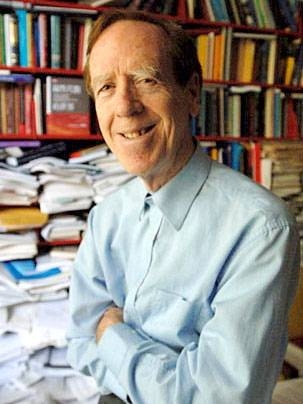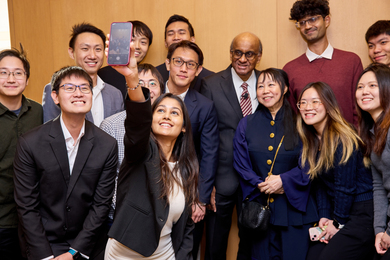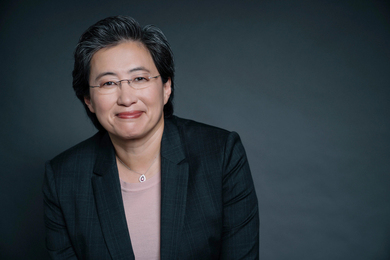During his 50-year career at MIT, Professor Gilbert Strang (S.B. 1955) of the Department of Mathematics has become one of the most recognized mathematicians in the world, thanks to his expertise in both teaching and writing.
This year it is his teaching that has received unusual attention.
In recent months Strang has been awarded three different prizes. The Northeastern Section of the Mathematical Association of America (MAA) chose him as 2006 Distinguished University Teacher of Mathematics. The nationwide Deborah and Franklin Tepper Haimo Award will be presented at the MAA's annual meeting in January. The new Su Buchin Prize, to be awarded for the first time in 2007, was announced on Sept. 18 by the International Council for Industrial and Applied Mathematics (ICIAM).
The Su Buchin Prize is particularly exciting for Strang because it honors his work teaching mathematics around the world. It was created on the initiative of the Chinese Society for Industrial and Applied Mathematics (CSIAM).
According to CSIAM materials, "The prize was established to provide international recognition of an outstanding contribution by an individual in the application of mathematics to emerging economies and human development, in particular at the economic and cultural level in developing countries."
Strang has visited China eight times. "During these visits Gil Strang spent much time in discussing mathematics and sharing teaching experiences with many Chinese students, researchers and teachers," said Professor Ian Sloan of the University of New South Wales, the president of ICIAM. "His great contributions in mathematics and his dedication to advancing public awareness of the power and potential of mathematics have been exceptional."
Strang has spent time in dozens of countries teaching and lecturing. "A big part of my life is to open mathematics to other people," Strang said. "I enjoy the travel and I enjoy meeting people."
Since the start of OpenCourseWare (OCW)--a five-year-old MIT program that offers curriculum and course materials from more than 1,500 MIT courses on the web--Strang's linear algebra course has shot to the top as its most visited course.
In many ways, Strang credits OCW for his Su Buchin prize.
"I am pleased not just about the prize and the personal part," he said. "I am more pleased that people are able to learn linear algebra because of OCW."
Making the seemingly inaccessible accessible has always been Strang's goal. His 1976 textbook on linear algebra launched a teaching revolution with its conversational tone and practical applications for the subject. "Up to that point, linear algebra had been primarily for math majors," he said.
In his estimation, linear algebra could be as useful to engineers as calculus. "I guess I knew its applications in a way that a pure algebraist might not," Strang said.
Since then, Strang has found many ways to incorporate mathematics into an engineering curriculum. His 18.085 and 18.086 courses on mathematical methods for engineers now attract 200 students a year. And the 18.06 linear algebra course is taken by more than a third of MIT undergraduates.
Over the years, Strang has published numerous textbooks, monographs and papers. For his work on the finite element method, he won the 2005 von Neumann Prize Medal from the U.S. Association for Computational Mechanics. Still, he is more impressed by the accomplishments of others: "I am very pleased, but a lot of mathematicians are doing terrific things," he said.
A version of this article appeared in MIT Tech Talk on September 27, 2006 (download PDF).






